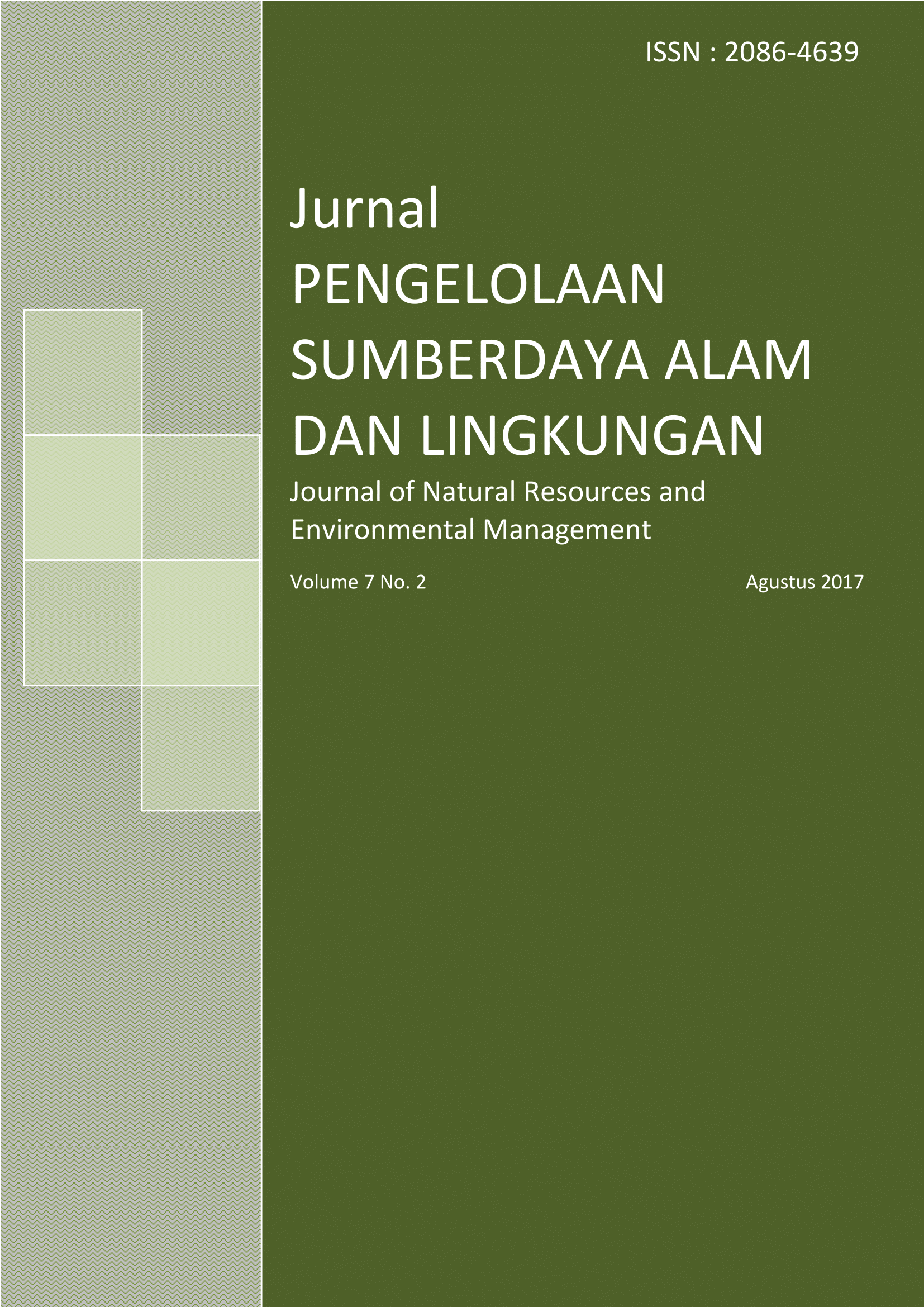PENGEMBANGAN POTENSI SUMBER DAYA ALAM FOSIL KAYU DI DAERAH GORONTALO
Abstract
Gorontalo area is part of the arc volcano - plutonic North Sulawesi predominantly volcanic rocks and intrusif rock Eocene to Quaternary. The tectonic position makes the Gorontalo area of natural resource mining prospects both metallic and non metallic minerals. One of them is a non-metal potential of petrified wood. The purpose of this study to analyze the condition of geomorphology, lithology, stratgraphy, and determine the nature of the physical characteristics of petrified wood in order to formulate feasibility as gemstones. The method used qualitative and quantitative results of the field survey which is then compiled the results of the laboratory. Field analysis in the form of geological mapping, sampling and documentation of geological data. The laboratory analysis conducted mineralogical and geochemistry analysis in the form of X-Ray Diffraction (XRD) and X-Ray Fluorescence (XRF). Dissemination of research results, the petrified wood in Tohupo River and Molannihu River. Petrified wood found in fluvial and alluvial sediment in tuffaceous sandstone layer with two types of insitu and transported. Results of laboratory analysis both mineralogy and gochemistry indicates that the mineral constituent of petrified wood are Quartz (SiO2) with good quality so worty as a gemstone because of its aesthetic, translucent and hardness 7 Mohs Scale.
References
Andianto, N. E. L., A. Ismanto, 2012. Identifikasi Fosil Kayu dari Kali Cemoro Kabupaten Sragen, Jawa Tengah. Prosiding Seminar Nasional Biologi, Prospektif Biologi dalam Pengelolaan Sumber Hayati. Fakultas Biologi, UGM, Yogyakarta.
Bachri, S., Sukido, dan N. Ratman, 1994. Peta Geologi Lembar Tilamuta, Sulawesi. Pusat Penelitian dan Pengembangan Geologi, Bandung.
Badudu, J. S. dan S. M. Zein, 2001. Kamus Umum Bahasa Indonesia. Pustaka Sinar Harapan, Jakarta.
Dewi, L. M. Y. I. Mandang, S. Rulliaty, Suprihatna, 2013. A New Record of Shoreoxylon (Dipterocarpaceae) Fossil Wood From Flores Island, Indonesia. Proseding 8th Pacific Regional Wood Anatomy Conference, Nanjing.
Dewi, L. M, 2013. Penelitian Fosil Kayu: Status dan Prospeknya di Indonesia, Disajikan pada Diskusi Litbang Anatomi Kayu Indonesia di IPB International Convention Center, 3 Juni 2013.
Gemstone Clarity Grades GIA (Gemological Institute of America Inc), 2009 http://www.rocksinmyheadtoo.com/index.html [15 Maret 2017].
Hamilton, W., 1979. Tectonics of the Indonesian region. Geological Survey Proffesional Paper 1078, U.S. Govern.Printing Office, Washington. U.S.G.S. Professional Paper. 1078: 345.
Katili, J. A., 1970. Past and present geotectonic position of Sulawesi, Indonesia. Tectonophysics. 45, pp. 289-322.
Kavelieris, I., T. M. Van Leeuwen, M. Wilson, 1992. Geological Setting and styles of mineralisation, north arm of Sulawesi, J. SE. Asian Earth Sci. 7(2), pp. 113-129.
Molnar P. and K. E. Dayem, 2010. Major Intracontinental strike-slip faults and contrasts in Lithospheric Strength, Geosphere Journal. 6(4), pp. 444-467.
Palmer, D. Buku saku Fosil. Penerjemah: Yulin Lestari. Jakarta: Erlangga. http://id.wikipedia.org/wiki/Fosil. [13 Maret 2017].
Satyana, A., 2007. Escape Tectonic Indonesia. http://geoblogi.wordpress.com [22 November 2016].
Sompotan, A. F., 2012. Struktur Geologi Sulawesi. Perpustakaan Sains Kebumian, Bandung.
Trail, D. S., T. U. John, M. C. Bird, R. C. Obial, D. A. Pertzel, D. D. Abiog, Parwata and Subagio., 1974. The General Geological Survei of Block 2 Sulawesi Utara Indonesia., PT Tropic Endeavor Indonesia.
Bachri, S., Sukido, dan N. Ratman, 1994. Peta Geologi Lembar Tilamuta, Sulawesi. Pusat Penelitian dan Pengembangan Geologi, Bandung.
Badudu, J. S. dan S. M. Zein, 2001. Kamus Umum Bahasa Indonesia. Pustaka Sinar Harapan, Jakarta.
Dewi, L. M. Y. I. Mandang, S. Rulliaty, Suprihatna, 2013. A New Record of Shoreoxylon (Dipterocarpaceae) Fossil Wood From Flores Island, Indonesia. Proseding 8th Pacific Regional Wood Anatomy Conference, Nanjing.
Dewi, L. M, 2013. Penelitian Fosil Kayu: Status dan Prospeknya di Indonesia, Disajikan pada Diskusi Litbang Anatomi Kayu Indonesia di IPB International Convention Center, 3 Juni 2013.
Gemstone Clarity Grades GIA (Gemological Institute of America Inc), 2009 http://www.rocksinmyheadtoo.com/index.html [15 Maret 2017].
Hamilton, W., 1979. Tectonics of the Indonesian region. Geological Survey Proffesional Paper 1078, U.S. Govern.Printing Office, Washington. U.S.G.S. Professional Paper. 1078: 345.
Katili, J. A., 1970. Past and present geotectonic position of Sulawesi, Indonesia. Tectonophysics. 45, pp. 289-322.
Kavelieris, I., T. M. Van Leeuwen, M. Wilson, 1992. Geological Setting and styles of mineralisation, north arm of Sulawesi, J. SE. Asian Earth Sci. 7(2), pp. 113-129.
Molnar P. and K. E. Dayem, 2010. Major Intracontinental strike-slip faults and contrasts in Lithospheric Strength, Geosphere Journal. 6(4), pp. 444-467.
Palmer, D. Buku saku Fosil. Penerjemah: Yulin Lestari. Jakarta: Erlangga. http://id.wikipedia.org/wiki/Fosil. [13 Maret 2017].
Satyana, A., 2007. Escape Tectonic Indonesia. http://geoblogi.wordpress.com [22 November 2016].
Sompotan, A. F., 2012. Struktur Geologi Sulawesi. Perpustakaan Sains Kebumian, Bandung.
Trail, D. S., T. U. John, M. C. Bird, R. C. Obial, D. A. Pertzel, D. D. Abiog, Parwata and Subagio., 1974. The General Geological Survei of Block 2 Sulawesi Utara Indonesia., PT Tropic Endeavor Indonesia.
Authors
ErakuS. S., PermanaA. P. and HulukatiE. (2017) “PENGEMBANGAN POTENSI SUMBER DAYA ALAM FOSIL KAYU DI DAERAH GORONTALO”, Jurnal Pengelolaan Sumberdaya Alam dan Lingkungan (Journal of Natural Resources and Environmental Management). Bogor, ID, 7(2), pp. 172-177. doi: 10.29244/jpsl.7.2.172-177.
Authors who publish with this journal agree to the following terms:
- Authors retain copyright and grant the journal right of first publication with the work simultaneously licensed under a Creative Commons Attribution License that allows others to share the work with an acknowledgement of the work's authorship and initial publication in this journal.
- Authors are able to enter into separate, additional contractual arrangements for the non-exclusive distribution of the journal's published version of the work (e.g., post it to an institutional repository or publish it in a book), with an acknowledgement of its initial publication in this journal.
- Authors are permitted and encouraged to post their work online (e.g., in institutional repositories or on their website) prior to and during the submission process, as it can lead to productive exchanges, as well as earlier and greater citation of published work (See The Effect of Open Access).





